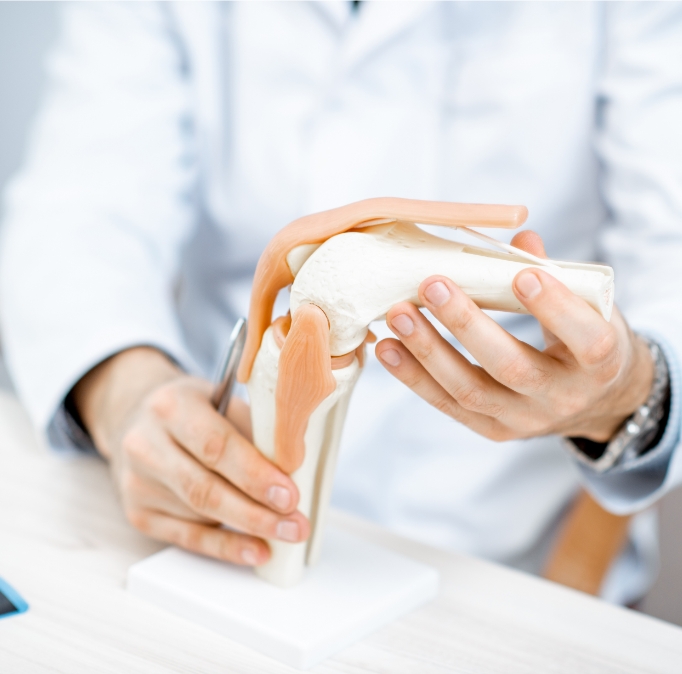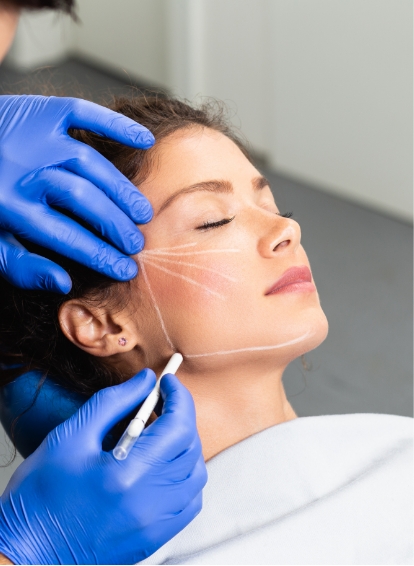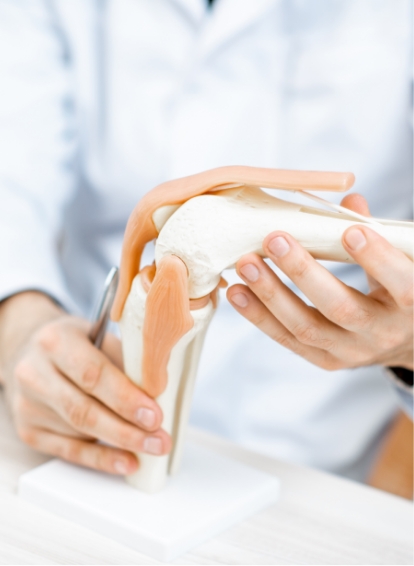Sports & Non-Surgical Orthopaedic Treatments
Bursitis
Bursitis is an inflammatory condition that affects the bursae, which are small, fluid-filled sacs located around joints, acting as cushions between bones, tendons, and muscles. When these bursae become irritated, they cause pain, swelling, and restricted movement, typically in high-use areas such as the shoulders, elbows, hips, and knees.
Our specialists at The Clinica are dedicated to providing effective treatments to manage bursitis, aiming to relieve pain, reduce inflammation, and restore mobility, ensuring patients can return to their daily activities without discomfort.

What is it?
Bursitis occurs when the bursae around a joint become inflamed, often due to repetitive motions or excessive strain. These fluid-filled sacs function as lubricants, reducing friction during joint movement. When a bursa becomes irritated or injured, it fills with excess fluid, resulting in pressure and pain. Bursitis can affect various joints but is most commonly seen in areas like the shoulders, elbows, hips, and knees, where repetitive movement is common.
In the early stages, bursitis may cause mild pain or stiffness in the affected joint, but as the inflammation worsens, symptoms can intensify, leading to sharp pain, swelling, and limited mobility. This can make activities like lifting, bending, or even walking uncomfortable, affecting an individual’s quality of life. Bursitis may occur suddenly, following an injury, or develop gradually, particularly in those with physically demanding jobs or sports involvement.
Chronic bursitis can result in recurring pain and discomfort if left untreated, making it essential to seek timely medical attention. Understanding the underlying cause and addressing any contributing factors is crucial for effective management and long-term relief.
Book an appointment
Additional Information

Causes of the condition
Bursitis typically results from repetitive strain on a particular joint, often due to activities or jobs that require frequent, repetitive movements. For example, athletes who engage in sports with repetitive arm movements, such as tennis or swimming, are at risk for shoulder bursitis, while frequent kneeling can lead to knee bursitis. The condition can also develop due to a direct injury or impact, which causes irritation in the bursa.
Certain underlying health conditions, such as rheumatoid arthritis, gout, or diabetes, can increase the risk of bursitis. In some cases, an infection may cause a bursa to become inflamed, especially if it’s near a wound. Age can also be a contributing factor, as bursae lose flexibility and resilience over time, making them more susceptible to irritation and inflammation.
Tests that can be done to confirm the condition
Diagnosing bursitis usually begins with a physical examination and a review of the patient’s medical history. During the examination, the clinician will check for signs of swelling, tenderness, and warmth around the affected joint. They may ask about specific activities that could be contributing to the pain, as well as any recent injuries.
Imaging tests, such as X-rays, ultrasound, or MRI, may be used to confirm the diagnosis and rule out other conditions. X-rays can identify bone abnormalities or arthritis, while ultrasound can provide real-time imaging of the bursa and surrounding soft tissues. MRI is particularly useful for detecting bursitis in deeper joints, such as the hip, and assessing the extent of inflammation.
If an infection is suspected, fluid may be aspirated from the bursa and sent for analysis. This helps detect bacterial presence and guides appropriate antibiotic treatment if needed.
Effective treatments
Treatment for bursitis aims to relieve pain, reduce inflammation, and restore normal joint function. Resting the affected joint is essential to avoid aggravating the inflammation. Applying ice and using anti-inflammatory medications can help control initial pain and swelling, particularly in acute cases.
Physical therapy is highly beneficial for bursitis, focusing on exercises that improve joint mobility, strengthen surrounding muscles, and prevent further strain. Stretching and strengthening routines tailored to the affected area can help reduce the likelihood of recurrence. Bracing or cushioning may also be recommended to support the joint during recovery and reduce pressure on the bursa.
In cases of severe or persistent bursitis, corticosteroid injections may be used to reduce inflammation and provide targeted pain relief. For cases involving bacterial infection, antibiotics are necessary to treat the infection and prevent complications. In rare cases, if conservative treatments are ineffective, surgical removal of the affected bursa may be considered to relieve pain and restore function.
Book an appointment for the initial consultation
Booking an initial consultation at The Clinica is the first step towards managing bursitis effectively. During this consultation, our specialist will perform a comprehensive assessment, discuss your symptoms, and review your medical history to identify potential causes and contributing factors. A thorough physical examination will help determine the affected joint and evaluate the severity of inflammation.
If necessary, imaging tests or bursa fluid analysis will be arranged to confirm the diagnosis and develop a targeted treatment plan. Following diagnosis, a personalised treatment plan will be developed, focusing on pain relief, rehabilitation, and long-term management to prevent recurrence and maintain joint health.
Frequently Asked questions
In some cases, bursitis may improve with rest and activity modification. However, professional treatment is often recommended to ensure full recovery and prevent recurrence.
Recovery time depends on the severity of the condition and adherence to the treatment plan. Mild cases may resolve within weeks, while chronic cases may take several months.
Yes, corticosteroid injections are effective for reducing inflammation and relieving pain in cases of persistent bursitis. They provide targeted relief when combined with other therapies.
Avoid repetitive motions and high-impact activities that stress the affected joint. Your clinician can provide guidance on safe exercises during recovery.
Bursitis can often be prevented by using proper technique, stretching before activities, and taking breaks during repetitive tasks. Supportive footwear and cushions can also help reduce strain.
Specialised Clinics
General Enquiries
Please send your enquiry to us and our Practice Manager will be in touch shortly. Alternatively, if you would rather speak to us or your enquiry requires our urgent attention, please call us on 01344 946363.








